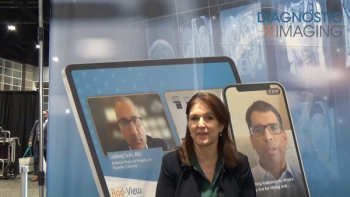
Report from SIR: RFA ‘biopsy’ shows prognostic potential
The histopathology of residual tissue from radiofrequency ablation probes after ablation of hepatocellular carcinomas could predict local tumor progression independently from other tests, according to a study presented Friday at the 2007 Society of Interventional Radiology meeting in Seattle.
The histopathology of residual tissue from radiofrequency ablation probes after ablation of hepatocellular carcinomas could predict local tumor progression independently from other tests, according to a study presented Friday at the 2007 Society of Interventional Radiology meeting in Seattle.
The team led by Dr. Constantinos T. Sofocleous, an interventional radiologist at Memorial Sloan-Kettering Cancer Center in New York City, had previously proved that coagulation necrosis could be documented by post-RFA histopathology in a significant number of cases. In the new study, the researchers sought to classify specimens extracted with the RFA electrode right after liver tumor treatment as either necrotic or viable tissue and correlate the tissue findings with treatment outcomes. The ability to document coagulation necrosis with biopsy remains controversial, however.
Sofocleous and colleagues prospectively classified 55 specimens harvested from RFA probes after liver treatment as coagulation necrosis and 13 as viable tumors from a nonspecified number of patients. The investigators also used information from medical records and imaging studies to determine local tumor progression. They found that the tissue samples taken from the probes could predict when RFA treatment would not be successful.
Primary local tumor progression occurred in 92% of viable tumors versus 29% of those identified by post-RFA biopsy as necrotic. Investigators also found the long-term progression-free interval was about six times greater in the necrotic group. This finding was statistically significant (p<0.001), as was the use of viability as an independent risk factor to predict progression (p<0.001).
"We always strive to have a complete ablation and clear margins. But we always get recurrence. We don't know the reasons," Sofocleous said. "My dream day is when we can be able to get immediate histological assessment, which is very hard to do today."
Sofocleous predicted immediate biopsy results could indicate to physicians the need to repeat ablation on the spot, which might help reduce recurrence. Although more trials are needed, this study seems to point in the right direction, he said.
Newsletter
Stay at the forefront of radiology with the Diagnostic Imaging newsletter, delivering the latest news, clinical insights, and imaging advancements for today’s radiologists.




























